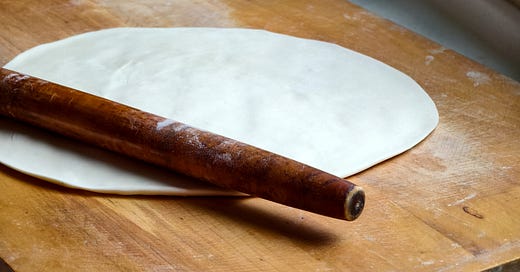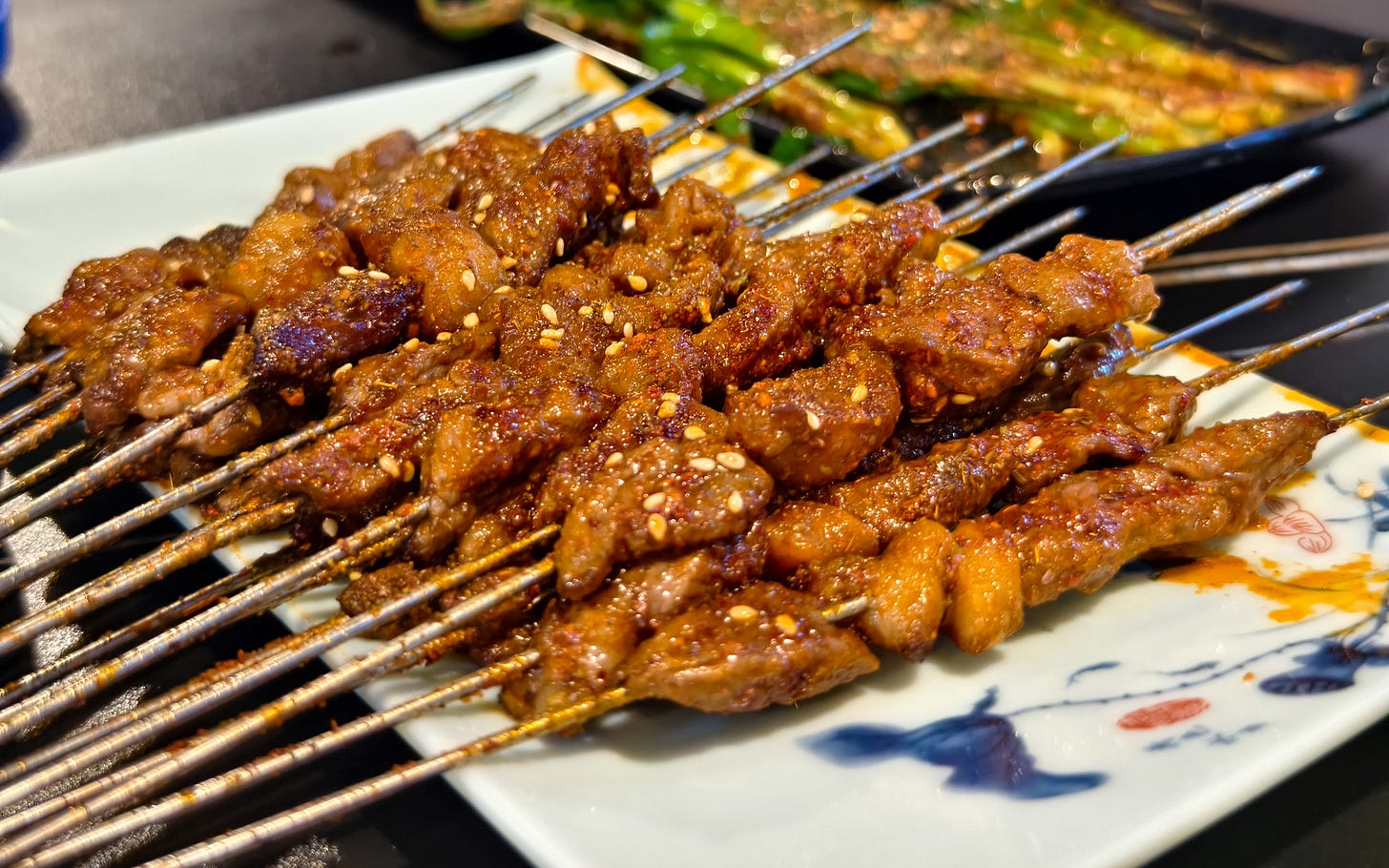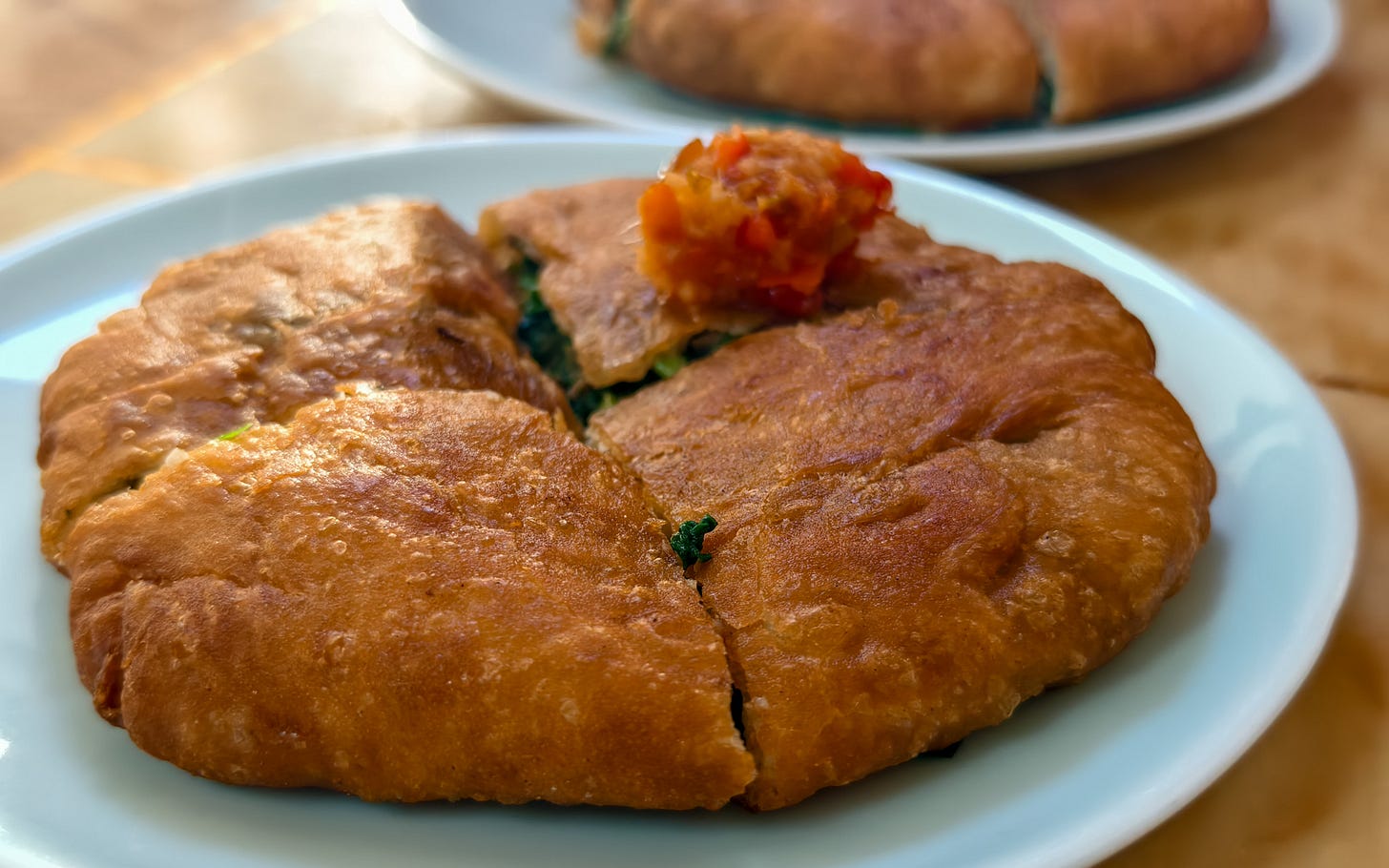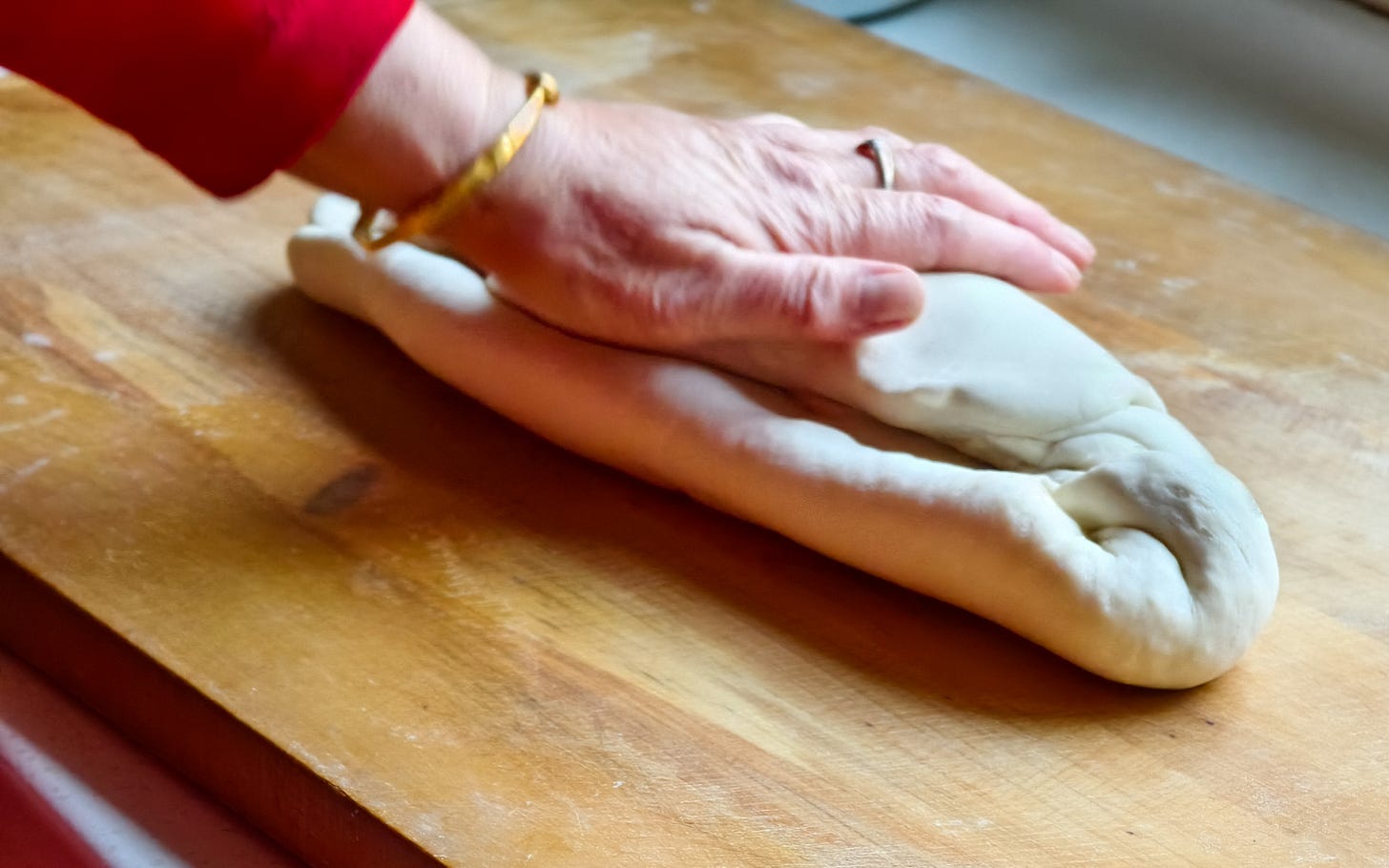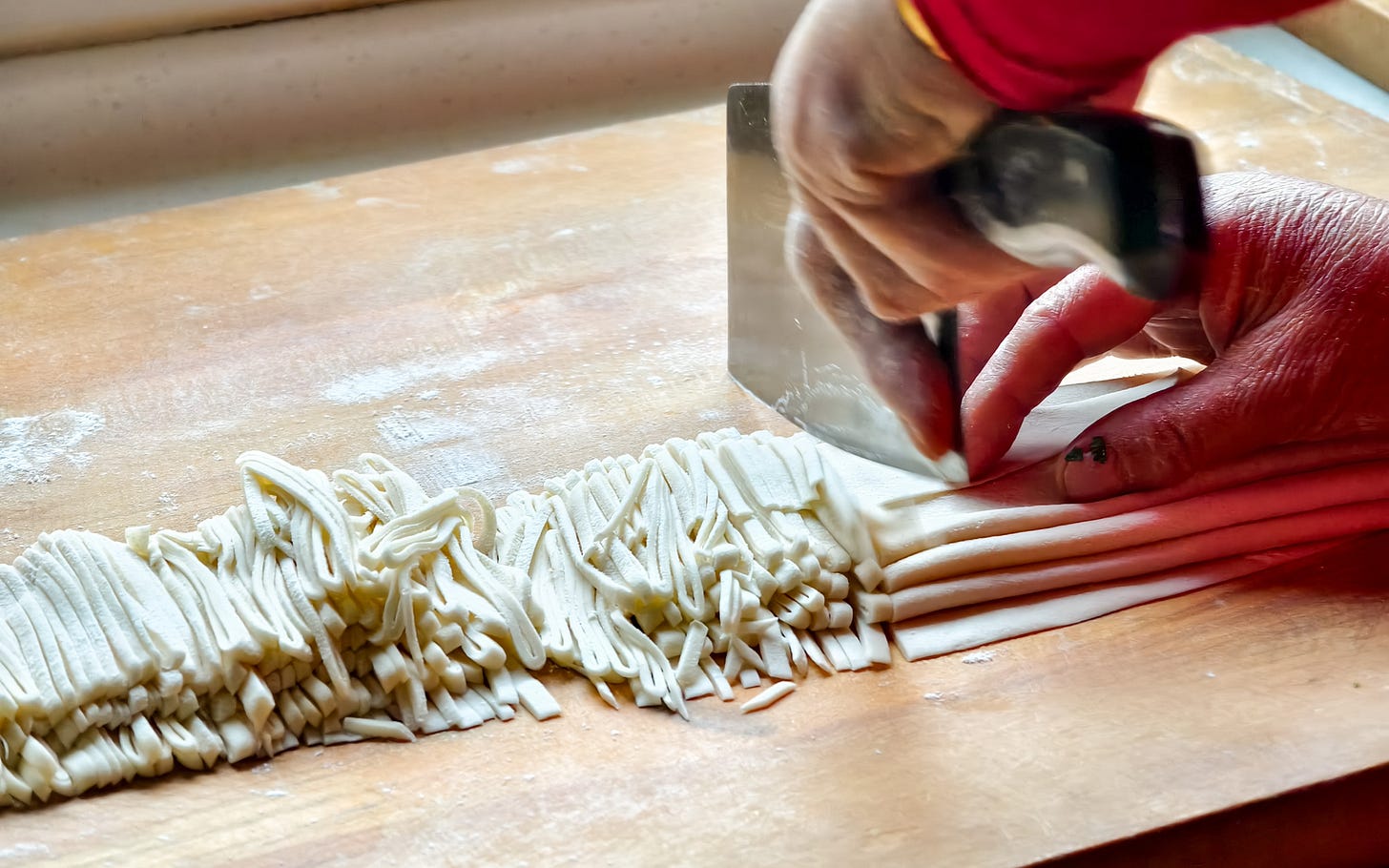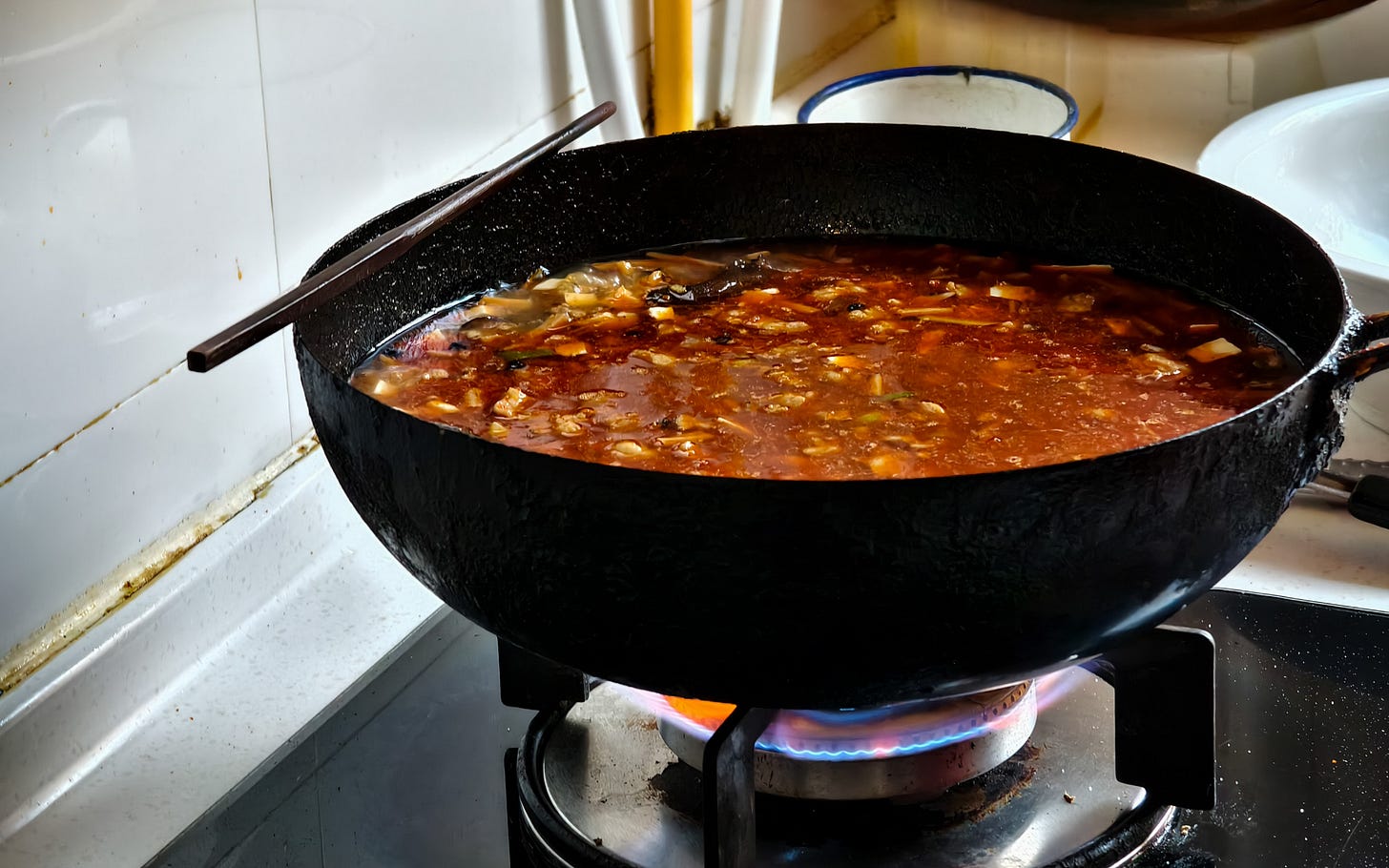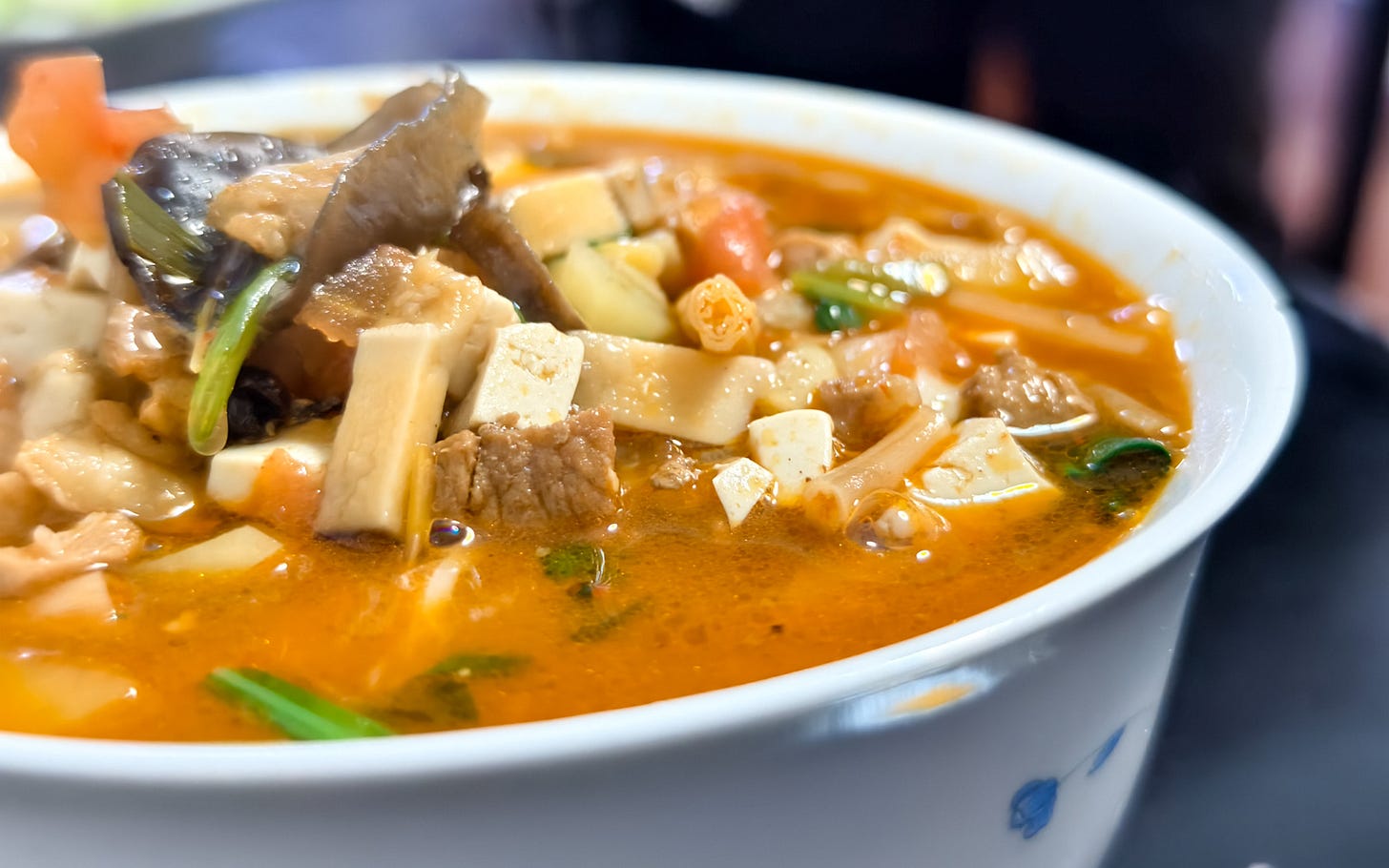When I set out on this trip, I expected that each of my four posts might follow a format, a summary of what and where I’d eaten, a gastronomic diary more than anything else.
For the five or so days we spent in Yinchuan, Vivian’s family hometown in northern China’s Ningxia province, I fear that would be impossible.
Outside of her parents and brother, Vivian’s family speak about as much English as I do Chinese, which is to say they could muster hellos, goodbyes, and asking if I wanted more food.
Punctuated by a steady series of visits to to Vivian’s grandma - or ‘nainai’ - around whose home the family seemed to orbit, most of our time was spent with her cousin Chao, who gamely ferried us from meal to snack to tourist site to meal again, while keeping us in a steady supply of the ubiquitous, saccharine, Costa-branded bottled coffee that he rightly recognised a trio of Westerners might enjoy.
Chao’s English was probably the best of the bunch, by which I mean he managed a ‘nice to meet you’ when we first met, before the language barrier slid firmly into place.
From there, my days slipped into a strange parody of silence, surrounded by the rhythms of a language I know only in fragments, just enough to make it difficult to entirely tune out into background noise. Every now and then a conversation would be haltingly translated into English for my benefit before normal service resumed, saving me from entirely slipping into the fringes.
When the Liu family travels, food is at the forefront, and so I was taken on guided, albeit unintelligible, tour of Ningxia’s staples: a series of soups, skewers, and fried foods, most heavy with mutton and cumin. I couldn’t tell you where I ate, nor even exactly what, deposited as I was in cramped corner canteens where the latest in our succession of snacks and suppers was delivered without much explanation.
I remember a bowl of sheep offal immersed in a deep red broth, more savoury than spicy despite the bright chilli hue, strips of lung mixed with flour to play the part of a noodle. A pancake fried to order for the benefit of the foreigner and his camera, coated in egg on the steaming grill and overflowing with the welcome crunch of vegetables. Another pancake, a heaving deep-fried disk stuffed to the brim with chopped mutton and chives, to be coated liberally with a bright, vinegary chilli paste, the only dish we returned to again.
For Vivian, our meals with Chao were a mix of new discoveries and old favourites, but there was always one dish that loomed large: yangrou saozi, a noodle soup made with marinated lamb and tomato, finished with a splash of black vinegar.
We ate this one evening at nainai’s, the bulk of the cooking handled by her carer and maid, known in the family as auntie Wang. Her family used to run a restaurant, and Vivian harboured the illusion that I might be taught her technique, come back home armed with the expertise to handcraft the noodles needed to satisfy the cravings whenever Ningxia felt far.
Perhaps unsurprisingly, things weren’t so simple. Auntie Wang speaks with a thick enough accent that even I could hear the difference, Mandarin interspersed with local dialect, and Vivian’s American ears couldn’t quite keep up. That left the flat’s small kitchen cramped, with her instructing, and a train of translation passing from Vivian’s mum, to herself, and finally to me - that is when instructions were translated at all.
I was given my chance to knead the dense dough, but the techniques I’d learnt for pasta and bread didn’t impress here. I didn’t push hard enough, I turned the dough too soon, I didn’t work the length into it like I should have. After its due 20 minutes of resting, I wasn’t asked to return for another attempt.
I fared a little better when it came to rolling, but not by much. Auntie Wang began by wrapping the end of the dough around the smooth rolling pin, turning it over once or twice before pulling the whole thing forwards and around the pin in a single sharp, smooth motion.
A few more rolls followed, but now with her hands working along the length of the roller, squeezing, gripping, and teasing the mass of dough further along, lengthening and flattening it in the process. Then the dough was released, rotated, and rolled again, every now and then the process pausing to swap to the next in a series of increasingly large rolling pins.
It was, as John aptly observed, a technique you simply couldn’t learn by watching.
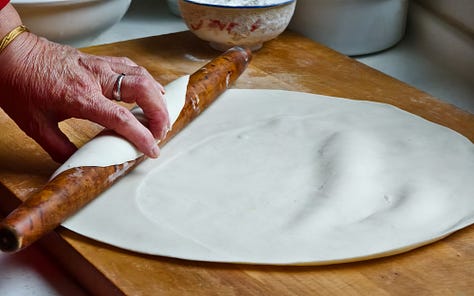
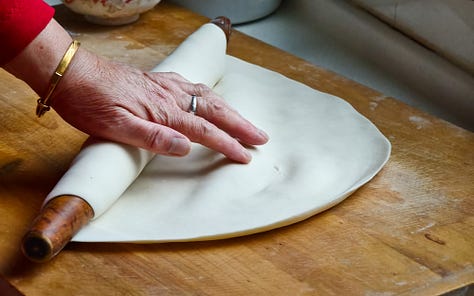
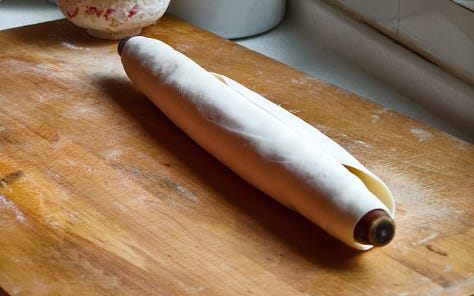
My first attempt was abortive. I fumbled at wrapping the dough onto the pin, didn’t pull it in sharply enough, couldn’t master the motion of rolling while simultaneously shifting my hands. I was hardly allowed to flatten it out and rotate for a second go before I was relieved of my duty wordlessly, the expert stepping in before I could do any more damage to dinner.
After this batch was sufficiently flattened, it was loosely layered, a cleaver withdrawn for the steady, careful work of slicing it into thin strips, separated out and ready to be boiled quickly at the moment of serving.
I was given my chance to ruin the second set. Left for a few minutes to work the dough, I eventually found an uneasy rhythm, spiralling the dough around the rolling pin even if the flurry of hand movements eluded me to the end. Occasional interjections were intended to help me learn, some translated and others not, leaving me only to guess at what I was getting wrong.
The best compliment anyone could muster was that I got it wrong the same way Vivian’s aunt does, the faintest praise I’ve been damned with in a good while.
When I wasn’t embarrassing myself with a rolling pin, we carefully studied the process behind the soup. I’ve eaten Vivian’s rendition a number of times, but like anyone trying to recreate their family’s food, her own attempts have never left her truly satisfied.
Here she spotted the inclusion of five spice, a seasoning she’s left out; the use of fewer tomatoes than she’s used to, the vibrant red finish instead trusted to liberal use of a warm but mild homemade chilli powder we’re now smuggling a jar of home; the intuited timing of when to add liquid and when to let it reduce, everything listed in the imprecise measurements of the seasoned home cook.
I wrote in Macau about the unachievable bar set by expectation, and the difficulty of truly loving the food that someone else is nostalgic for. I wish I could say that after all this work the yangrou saozi changed my life, that I had the sort of revelatory meal Vivian yearned for on my behalf.
In reality, it was just a good bowl of noodle soup, hearty and comforting. For all our work the noodles were a little soft from overcooking, the broth’s flavour slightly thin to my taste. I enjoyed it, and happily ate my fill, but it held none of the power over me that it does for her.
This was far from my favourite meal in Ningxia, but it might yet end up the one I best remember. Instead of being ferried between unknown cafes or squeezed into an anonymous private banquet room, served food I couldn’t name and had no role in ordering, this was a meal with place and purpose: a family feast, carefully prepared over hours as late afternoon light filtered in and dwindled out.
I probably left no better at making noodles than I arrived, and I’m not sure I’m any closer to helping cure Vivian’s cravings, but at least now I know the place, the people, and the cramped little kitchen that she’s really been yearning for this whole time.


